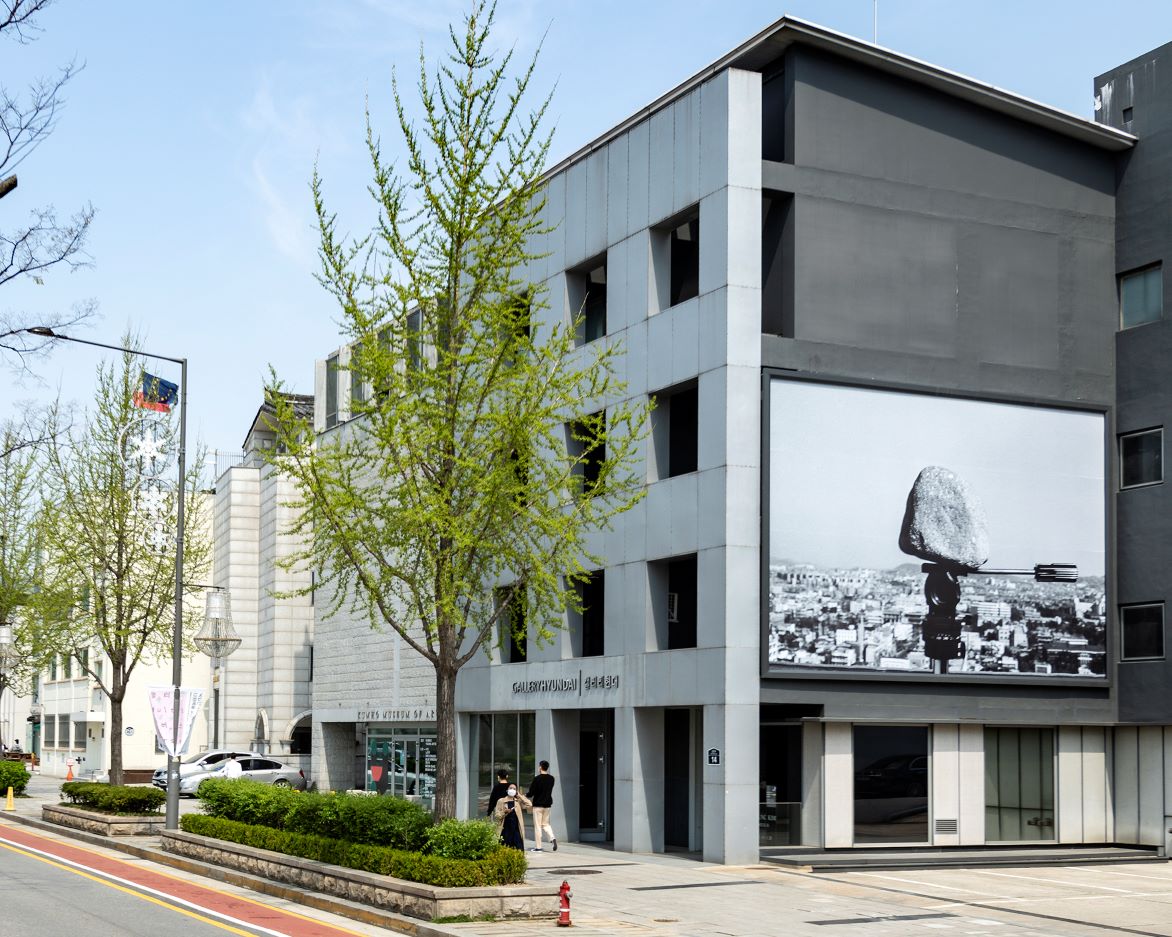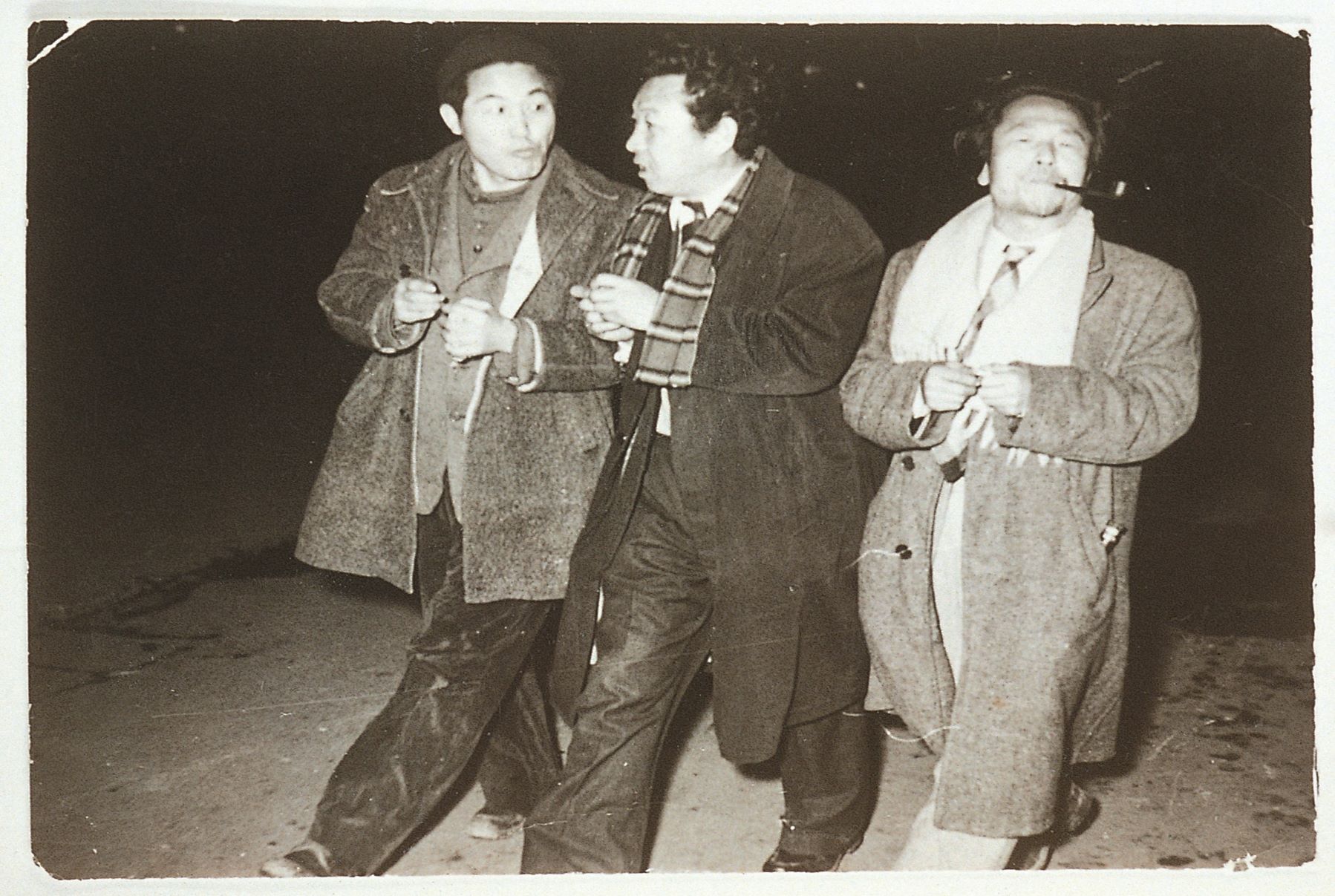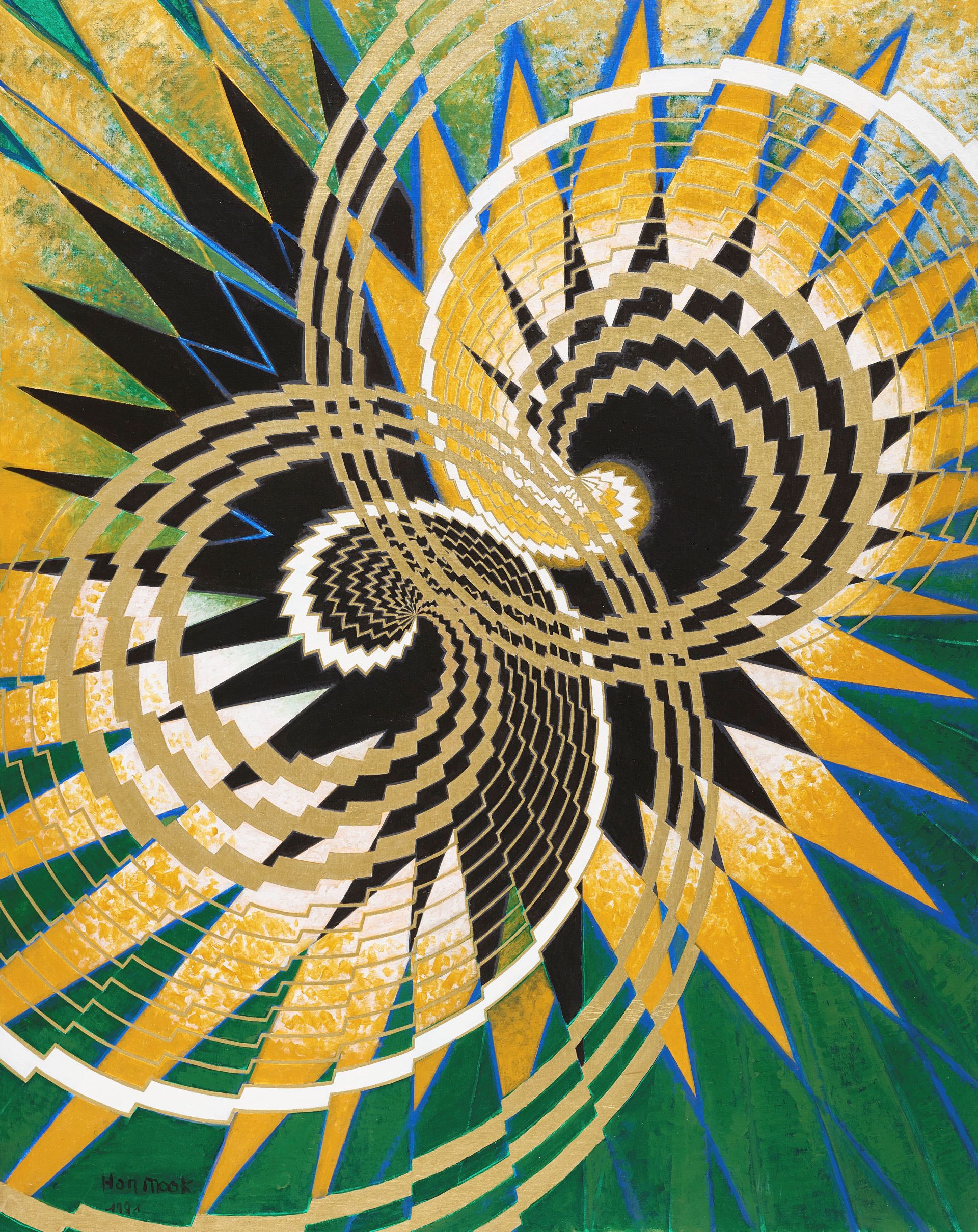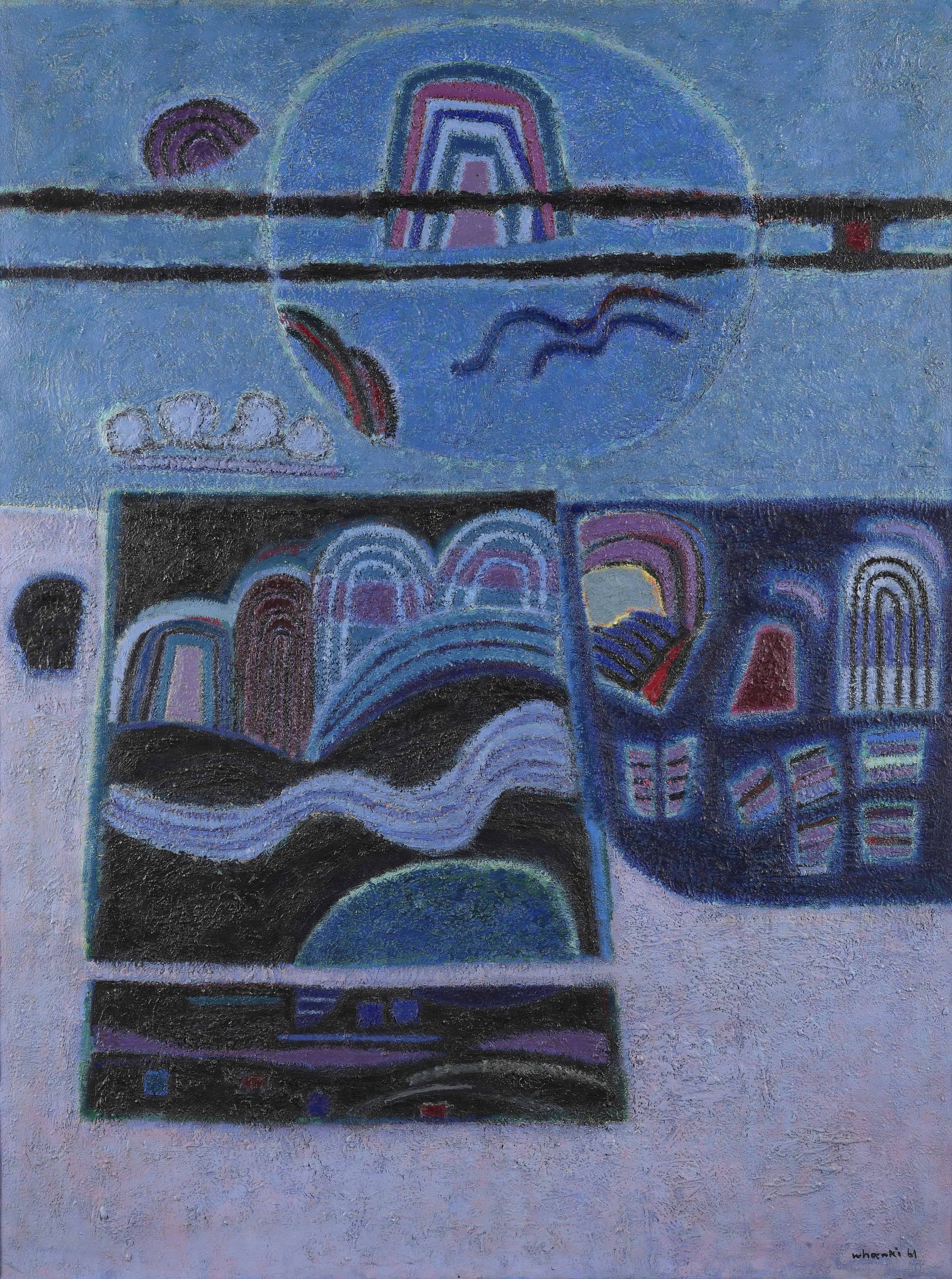
Lee Jungseop, Bull, 1950s, Oil on paper, 26.5×36.7cm. MMCA Lee Kun-hee collection
Lee Jungseop
* Source: Multilingual Glossary of Korean Art. Korea Arts Management Service
Related
-

Gallery Hyundai
A gallery located at Samseong-ro, Jongno-gu, Seoul. The gallery opened in April 1970 in Gwanhun-dong, Jongno-gu, Seoul, under the joint management of Han Yong-gu and Park Myung-ja. Started as Hyundai Hwarang (Hyundai Gallery), it was renamed as Gallery Hyundai in 1987. When it first opened, the gallery contributed to the development of contemporary Korean art, featuring the work of contemporary artists instead of antique calligraphy and paintings, which were actively exhibited and traded in Insa-dong. In September 1973, the gallery published an art magazine titled Hwarang, with an editing staff consisting of Lee Heung-u, Lee Gu-yeol, Park Rhaikyoung, Heo Yeonghwan, and Oh Kwang-su. After 1988, the magazine was renamed Hyundai Misul and it continued to be published until 1992. The gallery regularly held exhibitions of major figures in Korean contemporary art, such as Park Sookeun, Lee Jungseop, To Sangbong, Nam Kwan, Yoon Jungsik, and Chun Kyungja. After it moved to a new building in Sagan-dong in 1975, the gallery expanded the base for Abstract art through exhibitions featuring Yun Hyongkeun, Kim Tschang-Yeul, Park Seobo, Chung Sanghwa, and Lee Ufan.
-

Wolnam Artists Association
An artists’ group formed in Busan between June and August in 1952 by wolnam (North Korean defector) artists who fled from North Korea to the South during the Korean War. The membership comprised of artists based in Daegu, including Yoon Jungsik, Hwang Yooyup, Kim Hyungkoo, and Park Sunghwan; and artists who were based in Busan, including: Chung Kyu, Lee Jungseop, Chang Reesok, Park Kosuk, and Han Mook. Their works were featured in the wolnam artists exhibition in June, hosted at the USIS in Daegu and organized by the North Korean Branch of the Federation of Artistic & Cultural Organization of Korea. It was included in the North Korean refugee artists exhibition in November, held at the Busan International Club. The organization was unlike a Jonggunhwagadan (military artists programme) as the members were basically refugees who had left their homes behind to escape the war. Yet in his accounts, Lee Jungsop described himself as a jonggunhwaga (military artist), so the organization itself was different in character from his social status.
-

War Artists Corps
An organization formed after the outbreak of the Korean War. Its parent organization was the Bureau of Troop Information and Education of the Ministry of Defense. After the outbreak of the War, the organization was formed in Daegu by art teachers from each school. Once Seoul was recaptured by the South, artists based in Seoul joined and the association expanded. The military artist group consisted of multiple groups, divided by region—Daegu, Busan, and Gwangju—and military branches—Navy, Air Force, and Army. The military artist group was the headquarters that oversaw all these groups. The war painters held over 10 war documentary painting exhibitions over the course of the Korean War. The first was the Military Artists Prop Exhibition of the Ministry of Defense, which was held in March 1951 at the Bureau of Public Information in Daegu. The last exhibition was held in May 4, 1953.
Find More
-

Han Mook
Han Mook (1914-2016, pen name Mook, real name Han Baekyu, Japanese name Momoda), was born in Seoul and moved to Manchuria in 1932. He studied painting at the Ogwahoe Art Research Institute in Dalian and started to create his own works. In 1935, he moved to Japan, and studied at Kawabata Art School. After he returned to Korea in 1944, he taught at Geumgang Middle and High Schools in Goseong. When the Korean War broke out, he fled to Busan in 1951 and returned to Seoul in 1953, where he taught at Osan Middle and High Schools. He taught as an art professor at Hongik University in 1955 and led the foundation of the Modern Art Association in 1957. To concentrate on his creative practice, he departed to Paris in 1961 and studied etching at Atelier 17 in 1971. He died in Paris in 2016. Mook explored the gradation from figuration to non-figuration, and during the 1960s, he created works based on pure vertical and horizontal compositions while also using collage techniques and strong matiere. In the 1970s, he created many etched and abstract geometric works in acrylic, that represented the interlocking time and space of the universe in concentric circles and radiation. Since the mid-1980s, narrative and formative elements began to dominate within his work as he investigated the theme of introspection. He also created calligraphy, drawing, and collage works on traditional Korean Hanji paper and cloth.
-

Park Sookeun
Park Sookeun (1914-1965) graduated from Yanggu Elementary School and was a self-taught artist. In 1932, he began his career when he was selected for the 11th Joseon Art Exhibition [Joseon misul jeollamhoe], an event which he would subsequently be chosen for eight times. He founded Juhohoe (1940-1944) in Pyongyang with Choi Youngrim and Chang Reesouk. His work earned a special award for the second National Art Exhibition (Gukjeon) in 1953 and he became a Noteworthy Artist at the National Art Exhibition in 1959 and a judge in 1962. Park Sookeun’s works in the 1940s portrayed the humble lives of Koreans or somewhat resigned scenes of everyday life. After the Korean War, he often used thick gray lines to draw such work, often featuring subjects such trees, girls, and women. His work utilized various techniques, such as the elimination of shadow, emphasized outlines, or thickly daubed colors applied with a granite-like finish. In the 1960s, his unique expressive technique developed further, and enabled him to subtly capture Korean sensibilities through scenes of the everyday lives of girls and mothers in Korea. Park Sookeun excelled in describing the lives and sensibilities of ordinary Koreans.
-

Kim Whanki
Kim Whanki (1913-1974, pen name Suhwa) was born in Sinan, Jeollanamdo, and his family origin was from Gimhae. He studied at the Department of Fine Arts at Nihon University, Tokyo, Japan from 1933 to 1936. He joined the Avant-Garde Western Art Institute in 1934 and submitted his work to Avant-Garde art associations, such as the Second Division Exhibition Nikaten (Nika Art Exhibition) and the Exhibition of the Free Artists Association (Jiyu Bijutsuka Kyokai). After independence, he organized the New Realism Group and worked as a professor in the Department of Fine Art at Seoul National University (1946-1950) and Hongik University (1952-55). He lived in Paris from 1956 to 1959, and after his return, he became a professor and later the Dean of the Fine Art College at Hongik University (1959-1963). He participated in the seventh Sao Paulo Biennale and won an honorary award, and then moved to New York. He abruptly passed away while having a solo exhibition at Poindexter Gallery, New York, ironically when his career in the US was at its peak. As a pioneer of Korean abstract art, he started by working in geometric abstraction and moved on to semi-abstract work that featured natural motifs such as the mountain, the moon, and the river. After moving to the U.S., he returned to abstraction with his so-called "dot paintings." His painting 16-Ⅳ-70 #166 Where, in What Form, Shall We Meet Again? (1970), was awarded a grand prize at the Korean Art Grand Award Exhibition and has inspired many contemporary Korean artists. His work Rondo (1938) was selected as No. 535 within the national Registered Cultural Properties.






